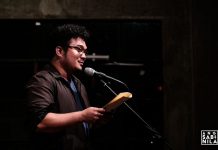 DESPITE the government’s efforts to uplift the status of indigenous people (IP), cultural communities in the country continue to be deprived of basic human rights, including educational opportunities.
DESPITE the government’s efforts to uplift the status of indigenous people (IP), cultural communities in the country continue to be deprived of basic human rights, including educational opportunities.
In an article published by the Varsitarian last Oct. 27, Miguel Ramil, chairman of the Association of Community Educators in Mindanao, said President Duterte’s administration after 100 days in office had so far failed to address the education concerns of the Kalumaran, the confederation of 18 IP groups in Mindanao.
Ramil also claimed that the Lumad, as the IP’s in Mindanao are called, had been forced to build alternative schools to sustain their communities’ education. But the presence of paramilitary groups in Mindanao served as a threat to their alternative education system. These paramilitary groups had reportedly labeled the schools as communist fronts.
According to a rerport by the International Work Group for Indigenous Affairs report, an international human rights organization staffed by specialists and advisers on indigenous affairs, 82 attacks on Philippine indigenous schools had been recorded from 2011 to 2015, which involved 57 schools run by non-governmental organizations. Hundreds of students were barred from attending classes and at least 24 primary and secondary indigenous schools were reportedly forcibly closed down by the Department of Education on the suspicion that they were training grounds for revolutionary groups.
Under section 28 of Republic Act 8371 or the Indigenous Peoples’ Rights Act of 1997, “the State shall, through the National Commission on Indigenous People (NCIP), provide a complete, adequate and integrated system of education, relevant to the needs of the children and young people of Indigenous Cultural Communities or Indigenous People.”
Section 30 of the same act states that “the State shall provide equal access to various cultural opportunities to the Indigenous Cultural Communities or Indigenous people through the educational system, public or private cultural entities, scholarships, grants and other incentives without prejudice to their right to establish and control their educational systems and institutions by providing education in their own language, in a manner appropriate to their cultural methods of teaching and learning. Indigenous children/youth shall have the right to all levels and forms of education of the State.”
But is the Philippine government really implementing the IP law?
Education is a right that everyone deserves to enjoy. It is not only for the privileged and the fortunate, but for all. But for the Philippine’s indigenous communities, it is a right that has to be asserted and realized.
Advocacy groups, the Church and various universities including UST have made efforts to fight for IP right to education through dialogues and protest marches. Last month was actually National IP Month, but it seemed to have gone unnoticed—hardly was there any noticeable observance or celebration from government.
Ten to 20 percent of the country’s more than 100 million national population—or some 6.5 million—belong to IP communities. Indigenous people have suffered enough from their geographical isolation that has made them a prey to land-grabbing and other forms of exploitation. But their physical situation is worsened by their social marginalization. As a result, they have been continuously deprived of their right to self-determination and right to their ancestral dominion.
Government should help alleviate the IP’s condition by education and social services. Government should them inclusive education, allotting funds for indigenous schools and institutions. Teacher-training programs can also be initiated to shape educators and prepare them to teach in IP schools.













